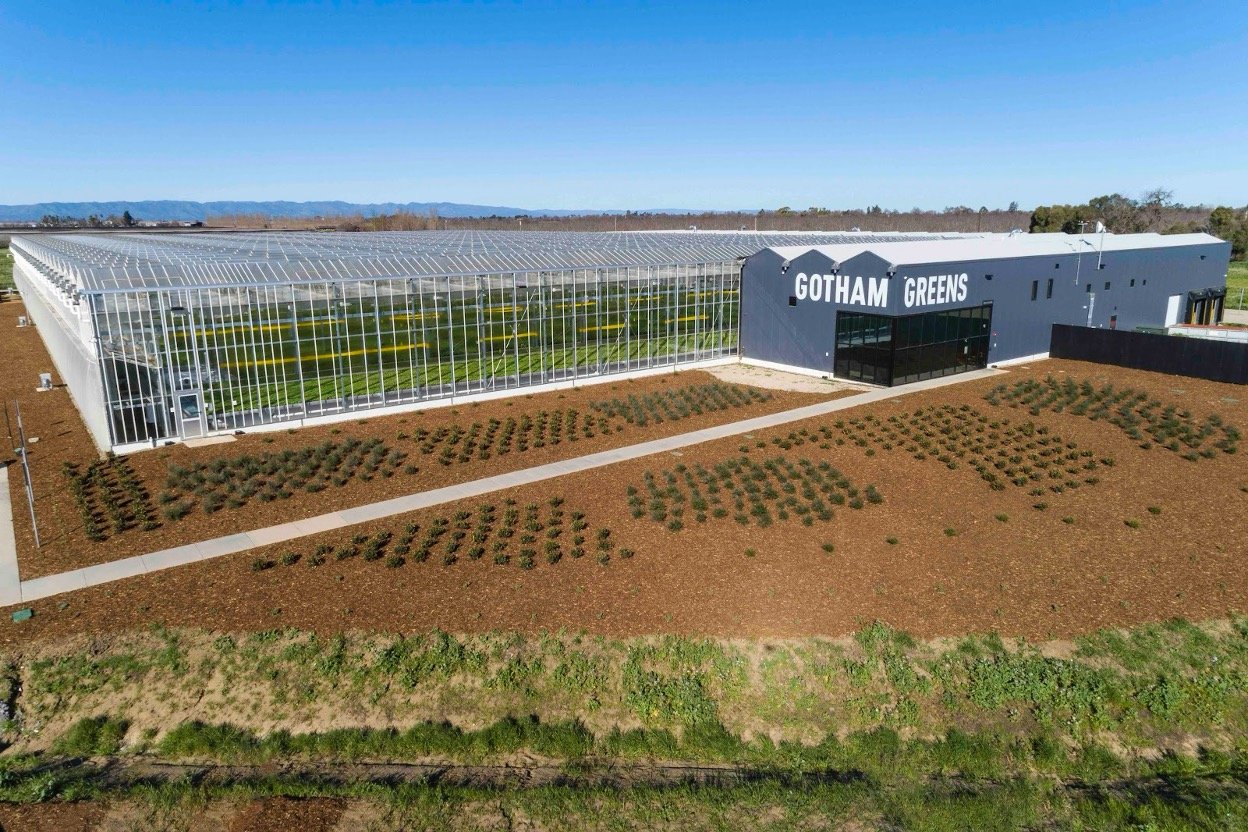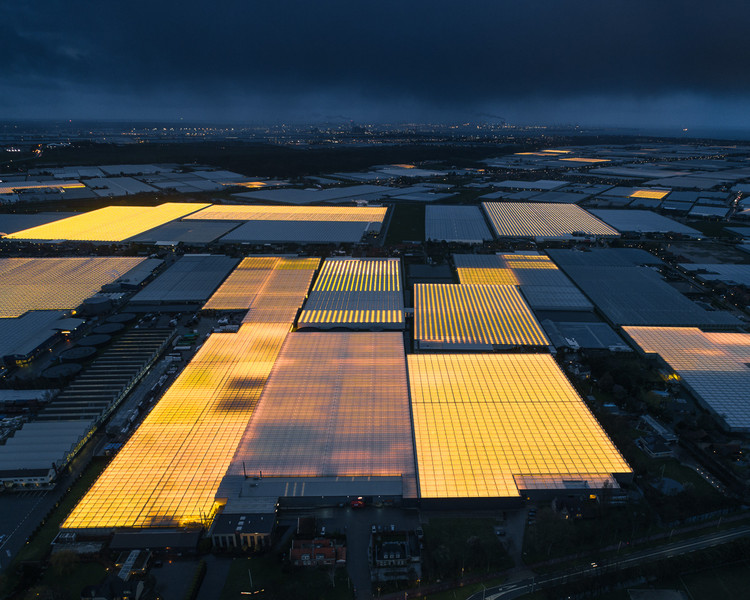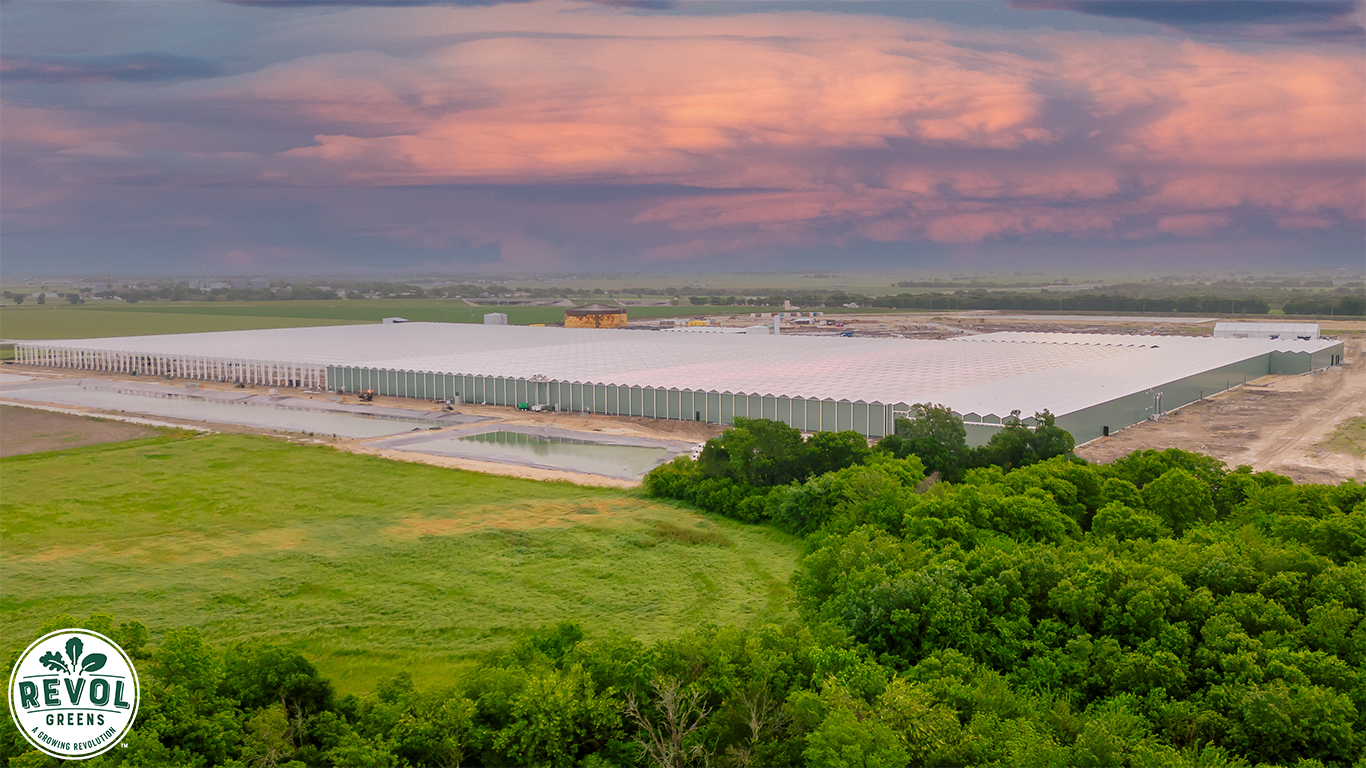Feb 4, 2024
The Case for Investing in Greenhouses in the United States

image courtesy of Gotham Greens
Written by: Niko Simos and Isabelle Dom
February 4, 2024
The agricultural landscape in the United States is undergoing a transformative shift, driven by supply chain weaknesses identified during the pandemic, the changes in our climate making it harder for field farmers to grow consistently, and the increasing demand from consumers for more sustainable and locally sourced produce.
Greenhouses offer a viable solution to meet this shift in consciousness by providing a controlled environment for year-round cultivation.
Unlike the heavily publicized indoor vertical farms, greenhouses leverage natural sunlight, circumventing the high energy demands plaguing vertical farming systems. Furthermore, these systems are proven as they have been used for centuries, and their technologies continue to advance.
Today's greenhouses vary in size and purpose, from high-tech facilities supporting research and breeding to those employing controlled environment agriculture techniques like hydroponics and aquaponics. The evolution of greenhouses reflects a continuous pursuit of optimizing growing conditions, meeting the demands of an expanding population, and contributing significantly to global agriculture and horticulture.
Notable Greenhouse Regions
Three regions of note have blossomed over the last several decades as destinations for greenhouse growers and operations. They are:
- Westland, Netherlands - Known as the “Greenhouse of Europe,” this growing area contains approximately 2500 hectares of greenhouses and is responsible for the second-largest export of food globally (only second to the United States).
- Almeria, Spain - Affectionally called the “Sea of Greenhouses”, Almeria is located along the coastline in the southeastern part of Spain. The area contains a reported 40,000ha of greenhouses which produce 2.5 to 3.5 million tons of fruits and vegetables.
- Leamington, Ontario - Referred to as the “Tomato Capital of Canada”, Leamington is home to over 60% of Ontario's greenhouses. In fact, according to the Municipality of Leamington's website, "the area's greenhouse acreage is larger than the entire U.S. greenhouse industry combined, making it home to the largest concentration of greenhouses in North America with nearly 2000 acres 'under cover'."

image courtesy of ArchDaily
As of 2021, Canada had, collectively, 219.7 million square feet dedicated to fruit and vegetable production. Its greenhouse industry saw a 5% increase in operations and a 7% rise in production from 2021 to 2022.
But Canada isn’t the only country in North America with a sizeable greenhouse industry. Thirty-one percent of Mexico’s protected agricultural operations are greenhouses, totaling 14,000ha.
As of 2017, the United States, which is ripe for greenhouse development, has over 112 million square feet of greenhouse production dedicated to vegetable cultivation and saw a 19% increase in number of greenhouse farms from 2012 to 2017.
According to Greenhouse Management's State of the Industry 2022 report, growers saw good revenue numbers. Forty-one percent reported double-digit profit margins and 37% said their net profit will be higher in 2022 compared to last year. Even with the increase in economic uncertainty throughout 2023, according to the same State of the Industry report, this time brought to us by AmericanHort, businesses are managed by "reexamining operational strategies and shifting focus from a grow-at-all-costs model to one that maximizes profitability."
Even though AmericanHort is reporting a trend that's steering away from growth, we have seen some of the larger US greenhouse brands expand across the US.
Big Greenhouse Expansions in the US
Little Leaf Farms
In 2022, Little Leaf Farms, a hydroponic lettuce company, secured an impressive $300 million in capital investment to fuel its expansion initiatives. The company is dedicated to broadening its reach and making its products accessible to half of the U.S. population by 2026. One of the key developments involves the establishment of a substantial 180-acre greenhouse in McAdoo, PA.
This expansion is made possible through funding from The Rise Fund, a sustainable investment fund by TPG, a Texas-based investment company, and additional support from Bank of America, one of Little Leaf Farms's early investors.
This substantial funding comes from a previous investment round in 2021, where Little Leaf Farms received $90 million from Equilibrium Capital in Oregon and Coppermine Capital in Concord.
Revol Greens
Revol Greens has recently completed a significant expansion of its Temple, TX greenhouse, reaching a total of 20 acres. This expansion is in response to the growing demand for fresh, greenhouse-grown organic baby leaf and romaine head lettuce programs in Texas. The company aims to meet local consumer needs by delivering products to stores and restaurants within 24 – 48 hours of harvest.

photo courtesy of Revol Greens
Gotham Greens
Gotham Greens has recently opened its twelfth greenhouse, marking its entry into the Southeast with a 210,000 square foot facility in Monroe, Georgia. This high-tech hydroponic greenhouse is the company's second of three new greenhouses scheduled to open in 2023. The Georgia facility utilizes enhanced automation, climate control, and data science capabilities to deliver a year-round supply of locally grown fresh produce to retail, restaurant, and food service customers in the region. The greenhouse's advanced technology overcomes the challenges posed by the hot and humid climate of the region, ensuring the quality consumers associate with the brand.
These three strong brands are filling gaps in a relatively small market that we believe has much larger potential within the US. Here are a few reasons why we believe greenhouses make sense from an economic opportunity standpoint.
Why Greenhouses Make Economic Sense
Climate Challenges and the Need for Controlled Environments
Climate change poses a significant threat to traditional agriculture, with extreme weather events, unpredictable temperatures, and water scarcity becoming more prevalent. Greenhouses provide a controlled environment that shields crops from adverse weather conditions, ensuring a consistent and reliable yield. This climate resilience is a key factor driving the adoption of greenhouse farming methods, making it an attractive investment for those seeking stability in the face of climate uncertainties.
Technological Advancements Driving Efficiency
The integration of cutting-edge technologies in greenhouse farming has revolutionized traditional agricultural practices. Automated climate control systems, precision agriculture techniques, and data analytics contribute to increased efficiency and productivity. Investors in the US greenhouse market can leverage these technological advancements to optimize operations, reduce resource usage, and enhance overall profitability.
Year-round Production and Crop Diversification
Unlike traditional outdoor farming, greenhouses enable year-round production, allowing farmers to meet the constant demand for fresh produce. This extended growing season not only enhances revenue streams but also facilitates crop diversification. Investors can benefit from a diverse range of crops, from fruits and vegetables to herbs and flowers, catering to various market demands and mitigating risks associated with seasonal fluctuations.
Local Job Creation and Economic Stimulus
Investing in the US greenhouse market goes beyond financial gains; it contributes to local job creation and economic development. Greenhouse operations require a skilled workforce for tasks such as crop management, monitoring technology, and maintenance. By investing in this sector, investors play a crucial role in fostering employment opportunities within their communities and supporting the broader economy.
Government Support and Incentives
Recognizing the importance of sustainable agriculture, the US government provides various support programs and incentives for greenhouse operations. These may include grants, tax credits, and subsidies aimed at promoting environmentally friendly farming practices. Investors in the greenhouse market can leverage these incentives to enhance their returns and reduce the overall financial risk associated with their investment.
Market Trends and Opportunities
The US greenhouse market is witnessing dynamic growth, with evolving trends that present lucrative opportunities for investors. Vertical farming, hydroponics, and aquaponics are gaining traction, reflecting a shift towards innovative and resource-efficient cultivation methods. Additionally, the increasing popularity of organic produce creates a niche market for investors looking to capitalize on the premium prices associated with organic certification.
Environmental Sustainability and Corporate Responsibility
As sustainability becomes a focal point for businesses globally, investing in the US greenhouse market aligns with corporate responsibility goals. Companies involved in greenhouse farming contribute to reduced carbon footprints, minimized water usage, and decreased reliance on chemical inputs. Investors can position themselves as stewards of environmentally responsible practices, appealing to a growing consumer base that values sustainability.
Financing opportunities
As indicated above, companies dedicated to the growth and sustainability of greenhouses are actively offering a spectrum of financial solutions, encompassing funding, loans, grants, and investor partnerships. As the greenhouse sector continues to flourish, investors seeking to be part of this transformative journey can explore specialized platforms that seamlessly connect them with groundbreaking projects. This synergy between visionary companies and investor platforms not only fuels the expansion of greenhouses but also fosters a collaborative ecosystem that propels agricultural innovation forward. To learn more about US-based financing partners for greenhouses, you can check our Agritecture Designer Financing Partners.
Challenges and Risk Mitigation
While the US greenhouse market presents a promising investment landscape, investors need to be aware of potential challenges. Factors such as high initial capital requirements, energy costs, and market competition can pose risks. However, a thorough risk mitigation strategy, including strategic planning, technological integration, and market research, can help investors navigate challenges and ensure a successful and sustainable investment.
Recent media sensation App Harvest, a large greenhouse project out of Kentucky, offers a strong cautionary tale of the devastating effect that an improperly vetted company can cause, way beyond the loss of investment returns.
Conclusion
In conclusion, the US greenhouse market stands as a fertile ground for investors seeking a combination of financial returns and environmental stewardship. The convergence of consumer preferences, technological advancements, and government support creates a compelling investment landscape. As the demand for locally sourced, sustainable produce continues to rise, investing in greenhouse operations not only reaps financial rewards but also contributes to a more resilient, eco-friendly, and socially responsible agricultural future. As investors navigate the evolving landscape, seizing the opportunity in the US greenhouse market may prove to be a wise and rewarding decision.
